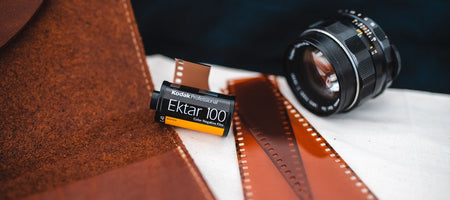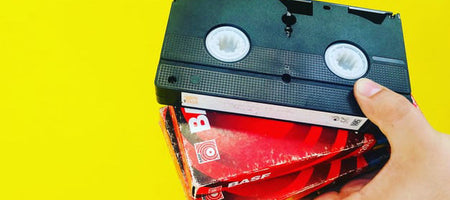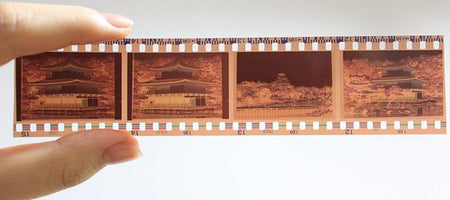It’s hard to imagine a world before iPhones and MacBook Pros, GoPros and Blue Ray DVDs. But not long ago, the world of photography and filmed looked totally different than it does today. The camera you hold in your hands—the one capable of holding thousands of frames, which can be edited or deleted with the touch of a button, downloaded to a laptop, and transferred to a DVD—has history. And like all forms of modern technology there’s a complex and astounding evolution that took place to create the devices we perceive as norms today. That iPhone that makes calls across the country, texts, records videos, and captures quality photographs? Yea, that didn’t come from nowhere.
A Brief History of Film
The lantern slide, referred to as the Laterna Magica (or magic lantern) was introduced in 1849, ten years after photography was first invented. These slides were transparent 3.5 x 4” images displayed via large projectors as a form of entertainment and education. Making photography more easily accessible, the slides were a huge step in standardizing the creation and viewing of imagery across the globe. That said, slides were incredibly fragile and difficult to use, which stirred a demand for more efficient and durable ways of screening imagery in years to come.
The Evolution
For over 40 years, film and photography continued to make baby steps, still restrained by colorless, black and white pigment. At this time, color film was only attainable through a slightly sketchy additive process that skewed a photo’s original exposure. But then a breakthrough happened! In 1935, 35 mm film was created, along with Kodachrome’s three-color processing. Kodachrome improved quality drastically, making it so that brighter lights were not required to view a clear and appropriately saturated image. Kodachrome technology made it so that viewers could witness the original intent of a photo, rather than a low quality, highly altered version. The photographs were clear and vibrant. Immediately, this technique became the new standard for image capturing and projection. Throughout the 50s, the 35 mm was used for home entertainment, as families would gather around the projectors to view slide shows of vacations and notable events. For years, tech improvements continued to springboard from Kodachrome ideas to improve further.
In 1973, 24-year-old engineer Steven Sasson went to work for Eastman Kodak, under whom he created the first digital camera just two years later. The camera weighed about eight pounds and took over 20 seconds to take. To playback images, data was read from the cassette tape parts and displayed on a TV set. It had a lens used from the Super 8 movie camera, 16 nickel batteries, and very unreliable imaging area system. So, it probably goes without saying that even the digital camera has changed drastically since its inception. From a mess of analog circuits wired together across tens of circuit boards to the sleek, lightweight, highly efficient cameras that we have now—capable of taking photos in 1/4000 of a second—things have certainly progressed. Yet if it weren’t for the slides, and it weren’t for the original digital camera that came from those slides, we wouldn’t be where we are now.
Today, digital photography and film is the norm—not only for photographers and videographers, but for anyone in the public sphere. With iPhones and affordable pocket-sized cameras, people of all ages, economic backgrounds, and personal interests can record their favorite moments.
Digitizing Your Memories
While grainy Polaroid film and gritty video recordings viewed via projector stirs a unique form of nostalgia, these methods will eventually be so outdated that they become inaccessible. Coffee stains on your Mom’s prom photos. Wine spills on Dad’s Varsity high school basketball team picture. A scratch on the old VHS tape. Heck, the extinction of VHS tapes and the VCRs to play them. To ensure that your childhood photos and historic familial videos don’t one day become irretrievable, consider sending your photos and recordings over to Southtree. Digitizing slides now will save you from losing these precious memories forever. Read more here on our process.













